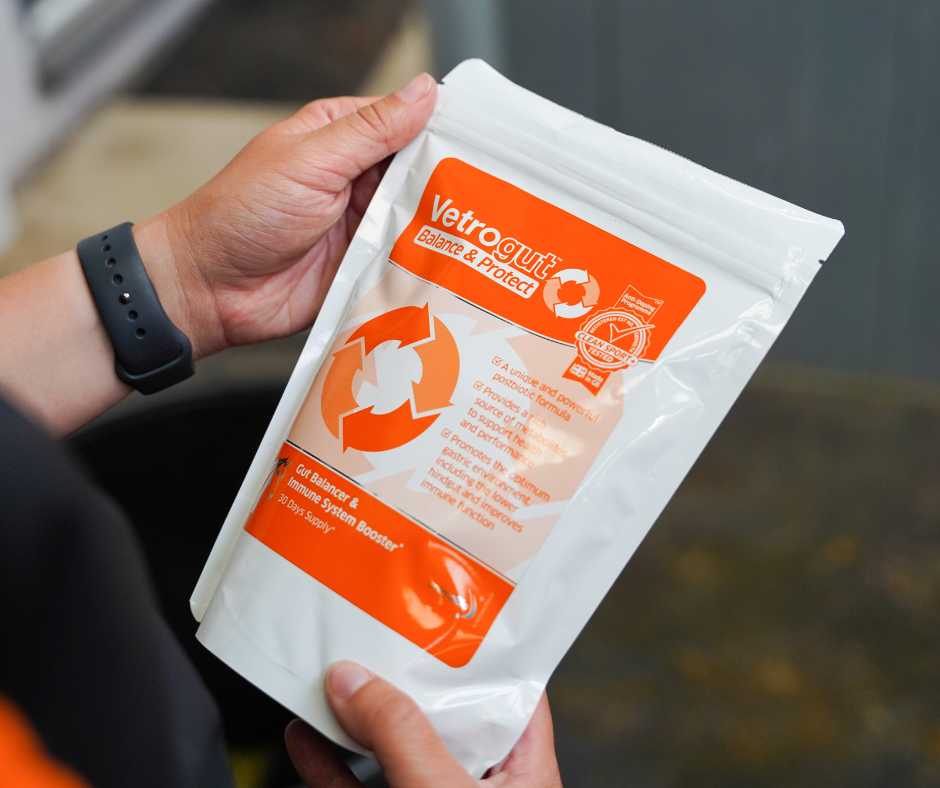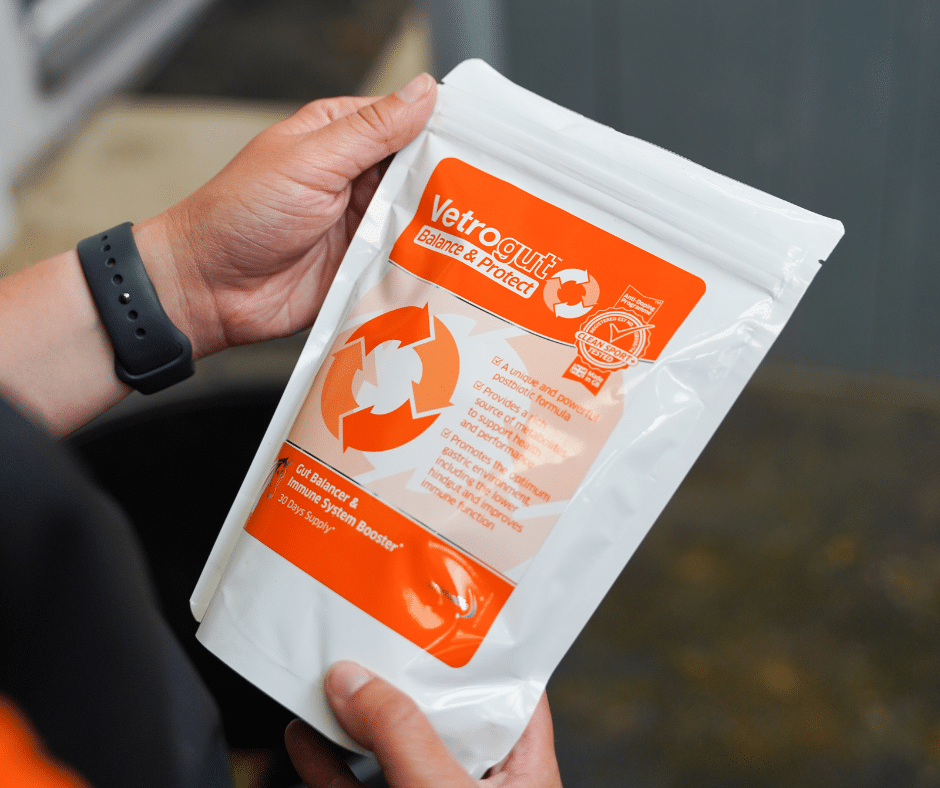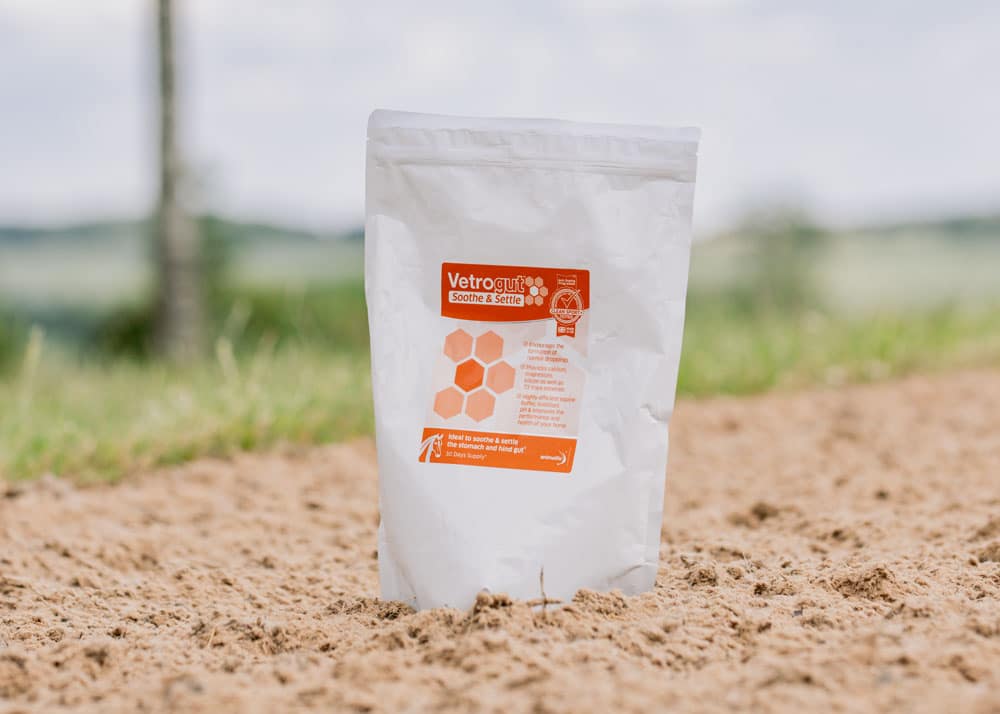Equine Health
Gut Health for Autumn
With its golden colours and crisp days, autumn is a favourite time of year for many. But as the seasons change it’s important to think about your horse’s digestive system and gut health.
Just as in humans, the gut is a key barometer of health, wellbeing and vitality in equines. The digestive system’s role is not simply restricted to the processing of nutrients – it is the most important part of the immune system, playing a vital role in boosting the horse’s natural defences.
While digestive health should be monitored throughout the year, several factors combine during the autumn months that can necessitate extra support.
The main seasonal changes are:
– Grass begins to lose its nutritional value
– The introduction of forage
– More time stabled owing to shorter, cooler days
– Dietary changes are made, which if done too suddenly can upset the digestive system
All of these factors can lead to digestive upset, reducing the amount of good bacteria in the hindgut. This in turn leads to a stressed immune system, discomfort, loose droppings, increased risk of colic and an inefficient digestive system.
Gut flora
The equine digestive system starts at the mouth and ends at the anus. Along the way, food is gradually digested and broken down into nutrients.
It is in the hindgut – the small and large intestines – that the majority of the digestion occurs.
Did you know?
The equine small intestine is around 22 metres long!
The caecum is the first section of the large intestine and it plays a very important role for the horse. At 1.2m long and with a volume of 30 litres, it is filled with a rich variety of bacteria that help the horse break down the cellulose in grass and absorb nutrients from it.
This bacterial community – the horse’s gut flora – is absolutely essential to wellbeing. One reason while dietary changes must be made slowly in horses is to allow the gut flora time to adapt to the chemical structure of new foodstuffs.
Supporting your horse with a supplement designed to nurture these vital bacteria is one way to protect the gut and boost wellbeing during the autumn months.
Understanding postbiotics
During the autumn you’ll need to introduce quality ad lib forage to your horse’s diet as grass loses its nutritional content. Alongside this, make any changes to routine gradually and with care in order to avoid digestive upset.
If you own a good doer, this is a great time of year to manage any summer weight gain. For finer, less hardy types, now is the time to prepare for winter.
Adding a digestive supplement to your horse’s diet, such as Vetrogut Balance & Protect, is a smart way to support the immune system while reducing the risk of digestive imbalance. While there are many supplements and balancers to choose from nowadays, most simply contain a mix of pro- and prebiotics. With its postbiotic mix, Vetrogut Balance & Protect is a more innovative choice providing targeted and fast-acting support.
What is a postbiotic?
Postbiotics are bioactive compounds made when the healthy bacteria in the gut ferment fiber. They have been receiving lots of interest in recent years as another way to improve gut health.
By feeding postbiotics you are providing all the healthy bacteria direct to the gut, without having to wait for fermentation to take place. This makes the supplement especially useful for poor doers, veterans or horses that are susceptible to stress.
Benefits of Vetrogut Balance & Protect
Acting like a multivitamin for your horse, published and in-vitro research has shown that Vetrogut Balance & Protect supports with:
• Gut health – supports a healthy intestine and bolsters the population of good bacteria in the hindgut
• Inflammation – reduces systemic inflammation
• Immune function – reinforces the first and second lines of active defence
• Improved performance
• Proven to enhance nutrient digestibility
Alongside this, Vetrogut Balance & Protect is proven by science to help your horse before, during and after exercise by:
• Increasing free fatty acid (FFA) levels
• Improving blood glucose levels
• Increasing blood haemoglobin levels
• Increasing packed cell volume
• Reducing lactate levels
• Lowering the heart rate following exercise





